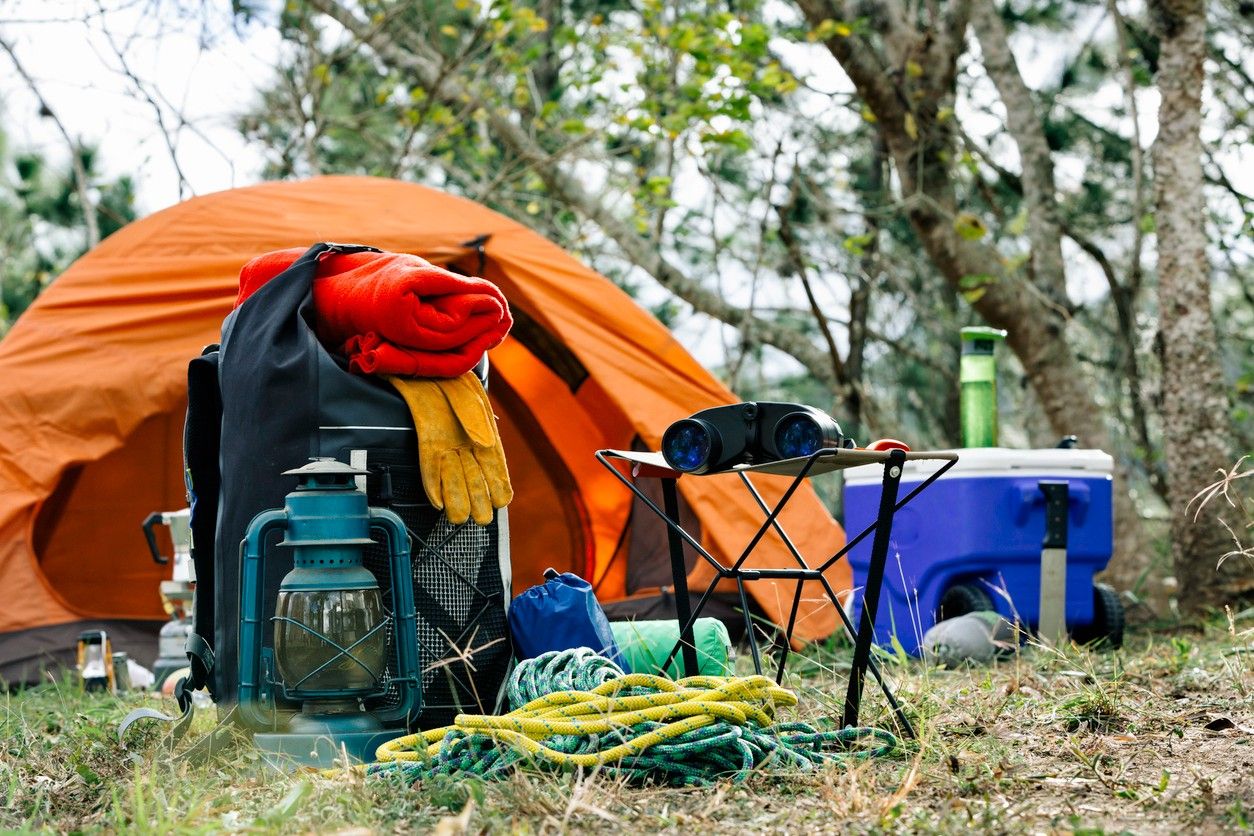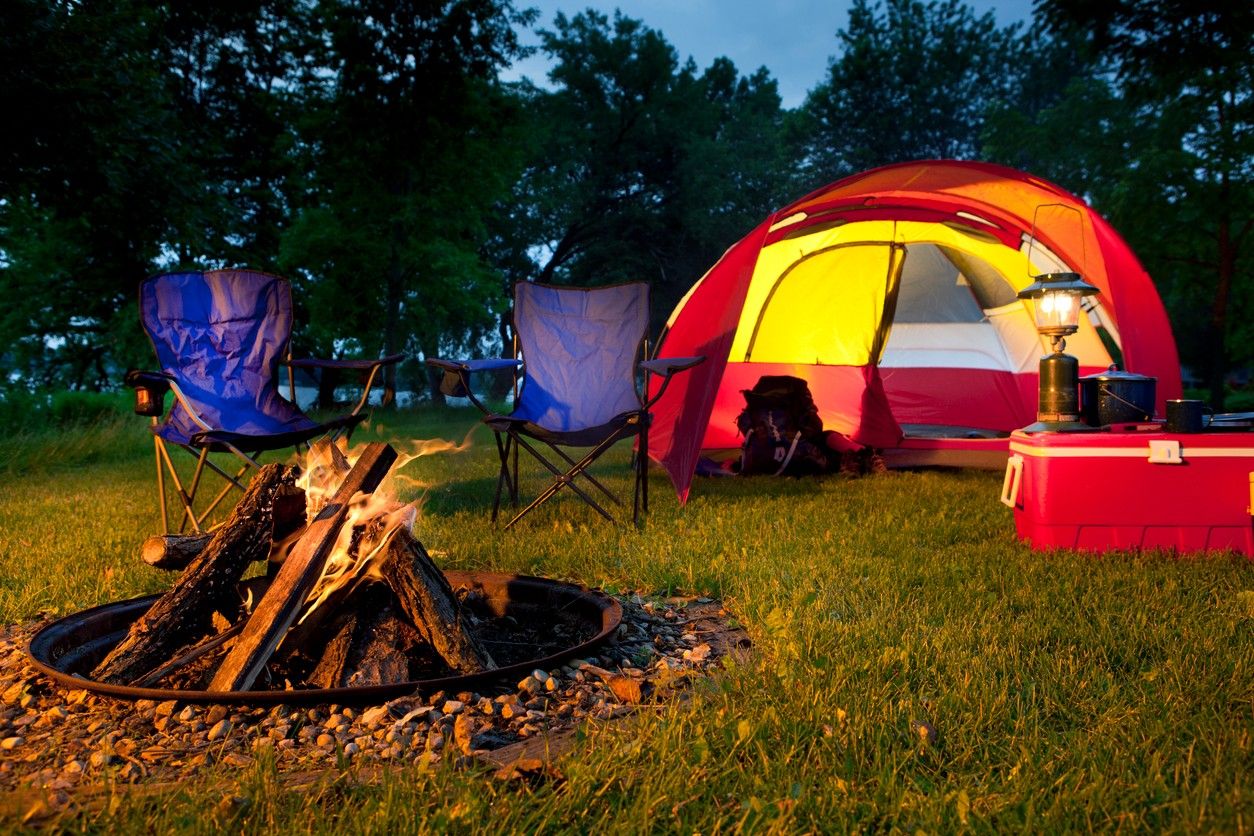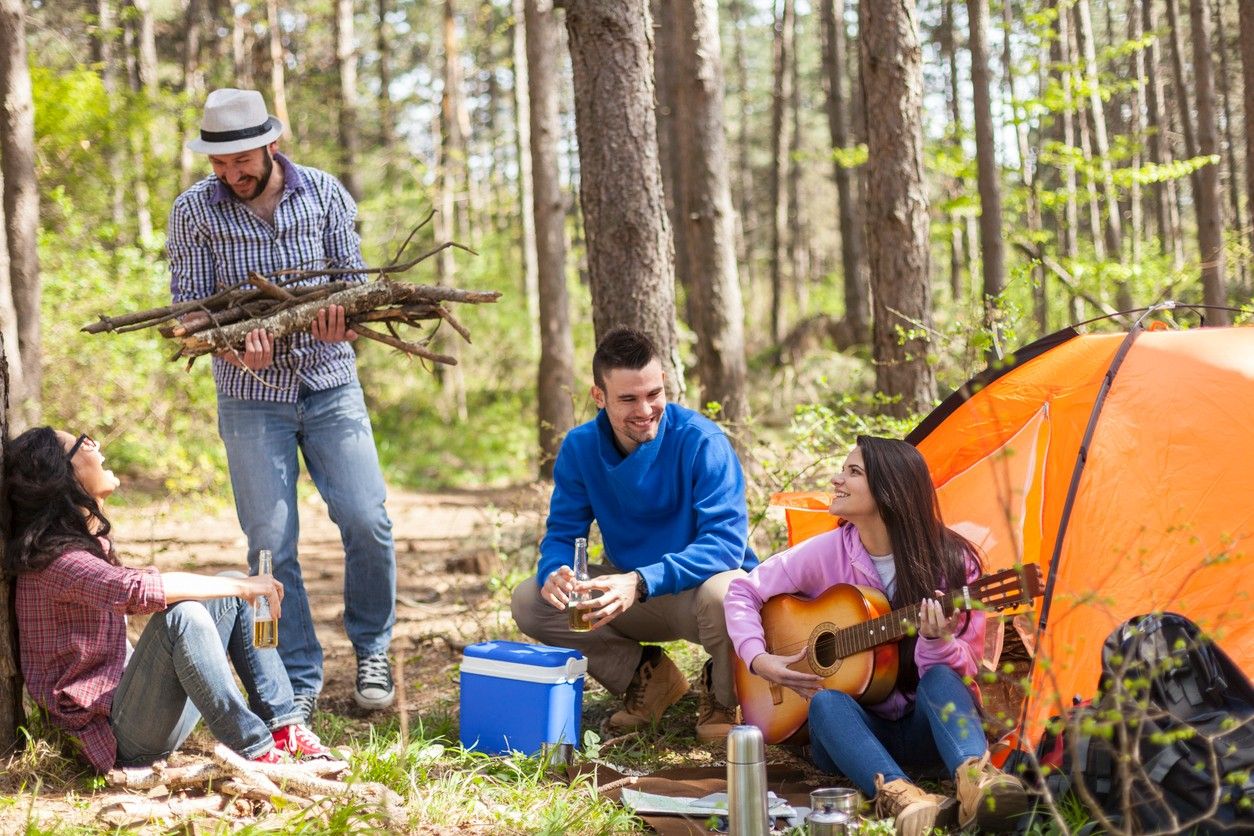When embarking on a camping adventure, one of the most essential pieces of equipment is a reliable cooler to keep your food and drinks fresh and cold. Choosing the right camping cooler involves considering several key factors, such as insulation performance, durability, size, and portability. Roto-molded coolers, like those from popular brands such as Yeti, Coleman, and Pelican, offer superior insulation and ice retention, making them ideal for extended camping trips. These coolers feature thick, uniform walls and dense foam insulation, ensuring that your ice stays frozen for several days, even in hot weather conditions. Durability is another crucial aspect to consider when selecting a camping cooler. Look for coolers made from robust materials like rotomolded plastic, which can withstand rough handling, impacts, and extreme weather conditions. High-end coolers often feature reinforced hinges, heavy-duty latches, and bear-resistant construction for added durability and security.
When it comes to size and capacity, consider the length of your trip, the number of people you're camping with, and the amount of food and drinks you need to store. Portable refrigerators offer an alternative to traditional coolers, providing powerful cooling capabilities and the ability to maintain consistent temperatures. However, they come with a higher price tag, require a power source, and are typically heavier and bulkier than coolers. Eco-friendly cooler options are also available for those who prioritise sustainability. Brands like Igloo offer coolers with innovative insulation materials, such as THERMECOOL, which is made from recycled plastic bottles and soy-based foam. By considering these key factors and exploring the various cooler brands and models available, you can find the perfect camping cooler to keep your food and drinks cold and fresh throughout your outdoor adventures.
How Do Coolers Work?
Ice Retention — The primary function of camping coolers is to retain ice and keep the interior cold. They do this by using thick insulation and sealing the cold air inside while preventing heat from entering.
- Insulation Technology — Coolers use advanced insulation materials, such as foam, to create a barrier against external heat. The insulation helps maintain low temperatures inside, extending ice life.
- Electric Cooling — Electric camping fridges utilise a compressor and refrigerant to provide consistent cooling. They require a power source, typically a car battery or a portable power station
Types of Coolers
Passive coolers (ice boxes or cool boxes) — These coolers don't require electricity and work by using insulation and ice packs to keep contents cool. They are good for shorter trips of 1-3 days. Popular for hiking and portability since they are lightweight. Brands like Coleman make robust passive coolers in their Xtreme range.
Thermoelectric coolers — These are powered coolers that cool using an electric heat pump system. They can typically cool to around 20°C below ambient temperature. They are quieter than compressor fridges but less powerful. Brands like Outwell make popular thermoelectric coolers in their ECOcool range.
Absorption coolers — These can be powered by electricity (12V or 240V) or gas. They use a heat source to drive a cooling process. Quieter than compressor fridges with no moving parts. Can cool 20-25°C below ambient temp. Dometic makes 3-way absorption coolers that can use electricity or gas.
Compressor fridges — Use an electric compressor like a household fridge. The most powerful type of portable fridge - can cool to freezing temperatures. More expensive, heavier and louder than other types. Ideal if you need to keep things cold or frozen for longer periods.
Soft coolers — Lightweight insulated cooler bags. Most portable option but the least powerful - good for day trips or carrying smaller amounts of food. Foldable and compact when not in use.
What Makes a Good Camping Cooler?
When choosing the best cooler for your camping needs, prioritise the elements that matter most to you, such as insulation performance, durability, portability, and eco-friendliness. By selecting a cooler that excels in these key areas, you can ensure that your food and drinks stay cold and fresh throughout your camping adventures.
Insulation and Ice Retention
Roto-moulded coolers, like those from Yeti, Coleman and Igloo offer superior insulation and ice retention due to their thick, uniform walls and dense foam insulation.
Premium coolers can keep ice frozen for several days, even in hot weather conditions, making them ideal for extended camping trips.
Durability and Construction
Look for coolers made from robust materials like rotomolded plastic, which can withstand rough handling, impacts, and extreme weather conditions.
High-end coolers often feature reinforced hinges, heavy-duty latches, and bear-resistant construction for added durability and security.
Size and Capacity
Consider the length of your trip, the number of people you're camping with, and the amount of food and drinks you need to store.
For most families, a 50-55 quart hard cooler is sufficient for weekend trips or small gatherings.
Larger coolers, such as those designed for extended camping trips or boating, offer more capacity and longer ice retention.
Portability and Ease of Use
If portability is a priority, consider coolers with wheels or backpack straps for easy transport.
Soft-sided coolers, like the RTIC Soft Pack Cooler or Yeti Hopper M20 Backpack Soft Cooler, are lightweight and easy to carry, making them ideal for day trips or hikes.
Look for coolers with user-friendly features, such as easy-to-open latches, accessible compartments, and a well-designed drainage system for melted ice.
Eco-Friendliness
If sustainability is important to you, consider coolers made from eco-friendly materials or with green manufacturing processes.
Brands like Igloo offer coolers with innovative insulation materials, such as THERMECOOL, which is made from recycled plastic bottles and soy-based foam.
Biodegradable coolers, like the Igloo Recool 16 Qt Cooler, are an eco-friendly alternative to traditional Styrofoam coolers
Coolers vs. Portable Refrigerators
When it comes to keeping your food and drinks cold while camping, you have two main options: traditional coolers and portable refrigerators. Coolers are the more traditional choice and offer several benefits. They are generally more affordable than portable refrigerators, making them a budget-friendly option for casual campers or those who only need to keep food and drinks cold for a short period. Coolers are also simple to use and easy to clean, with no electronic components or moving parts to worry about. They don't require any power source, making them versatile and ideal for camping in remote locations or situations where electricity is not readily available. However, coolers do have some drawbacks. They require a constant supply of ice to maintain cold temperatures, which can be inconvenient and costly over long periods. The ice also takes up valuable space inside the cooler, limiting the amount of food and drinks you can store. As the ice melts, it can cause your food and drinks to become wet and soggy, affecting their taste and texture. This is especially problematic for items like bread, crackers, and other dry goods that can easily become waterlogged and spoil.
On the other hand, portable refrigerators offer a more advanced and convenient solution for keeping your food and drinks cold while camping. They use compressors or thermoelectric technology to actively cool the interior, allowing you to set a specific temperature and maintain it throughout your trip. This makes them an excellent choice for longer camping trips or for those who need to keep perishable items like meats, dairy products, and vegetables fresh for extended periods without the hassle of constantly replenishing ice. Portable refrigerators often have separate compartments for refrigeration and freezing, allowing you to store a wider variety of food and drinks. Some models even have adjustable temperature controls, so you can customise the cooling level to suit your specific needs. However, portable refrigerators come with a higher price tag and are typically heavier and bulkier than traditional coolers. They also require a power source, such as a car battery or a portable generator, which can limit their versatility in certain camping situations. If you're camping in a remote location without access to electricity, you'll need to ensure that you have a reliable power source to keep your refrigerator running. Additionally, portable refrigerators can be noisy due to the compressor or fan, which may be disruptive if you're trying to enjoy the quiet of nature.
Eco-Friendly Cooler Options
As environmental concerns continue to grow, many consumers are seeking eco-friendly alternatives to traditional camping coolers. Manufacturers have responded by developing coolers that incorporate sustainable materials and green manufacturing processes. One notable example is Igloo's THERMECOOL insulation, which is 50 times more environmentally friendly than the minimum requirements set by US law. This innovative insulation is designed to be greener both during production and at the end of the cooler's life, reducing its overall environmental impact. Other eco-friendly cooler options include those made from natural, renewable, and biodegradable materials like cork, cotton, and sheep's wool. These materials provide effective insulation while minimising the use of synthetic materials that can harm the environment. Some coolers are also made from recycled materials, such as recycled plastics and glass. By repurposing these materials, manufacturers can reduce waste and conserve energy in the production process.
Another approach to eco-friendly cooler design is the use of highly efficient insulation technologies, such as vacuum insulation panels. While not inherently eco-friendly, these panels provide exceptional insulation performance, allowing coolers to have thinner walls and use less material overall, thus reducing their environmental impact. As consumers become increasingly aware of their carbon footprint and the importance of sustainability, the demand for eco-friendly camping coolers is expected to grow. By choosing coolers made from sustainable materials and supporting manufacturers that prioritise environmental responsibility, campers can enjoy the great outdoors while minimising their impact on the planet.
Cool Box Features and Accessories
Interior Organisation — Look for cool boxes with compartments or removable shelves to help you organise your items efficiently.
Drainage System — A good drainage system is crucial for removing melted ice water and keeping your items dry. Look for coolers with effective drain plugs.
Tie-Down Points — Tie-down points on the cooler's exterior are handy for securing it in your vehicle or preventing it from tipping over in rugged terrain.
Built-in Bottle Openers — Many camping coolers come with built-in bottle openers, adding convenience to your outdoor experience.
Baskets and Dividers — Some coolers offer baskets and dividers to help you organise your food and drinks, keeping them easily accessible.
Ice Packs and Cooling Elements — Invest in reusable ice packs or cooling elements to enhance the cooling performance of your cool box.
Wheels and Handles — For larger cool boxes, wheels and retractable handles make transportation easier, especially when fully loaded.
Temperature Control — Electric cool boxes often come with temperature control settings, allowing you to customise the cooling or warming temperature according to your needs.
Top Camping Cooler Brands
There are numerous cooler brands and models available on the market, each offering unique features and benefits. Some of the most popular and reputable brands include:
Igloo — Igloo is a well-established brand in the cooler market, offering a wide range of products for various camping and outdoor needs. The Igloo MaxCold and Igloo Sportsman series are popular among campers for their excellent ice retention and durability. Igloo also offers innovative solutions, such as the Igloo RECOOL, a biodegradable and recyclable cooler made from moulded pulp, providing an eco-friendly alternative to traditional coolers.
Yeti — Known for their exceptional durability and ice retention, Yeti coolers are a top choice among outdoor enthusiasts. Models like the Yeti Tundra and Yeti Roadie are renowned for their rotomoulded construction and superior insulation.
Vango — Vango offers a range of passive coolboxes and coolers designed to keep ice for several days, making them ideal for camping trips without electrical hook-ups. The Vango Pinnacle Collection features coolers crafted with portability, efficiency, and durability in mind, complementing the outdoor lifestyle of enthusiasts
Easy Camp — Easy Camp offers a range of electric cool boxes, fridges, and ice packs designed for camping and outdoor use. The Easy Camp Chilly 12V/230V 24 L Coolbox is a popular choice for car or campervan use, with a generous 24-litre capacity and the ability to keep contents cool. Easy Camp coolers are known for their practicality, versatility, and ease of use, making them a great addition to your camping equipment
When selecting a cooler brand and model, consider your specific needs, budget, and the features that are most important to you. Reading customer reviews and comparing specifications can help you make an informed decision and find the perfect cooler for your camping adventures.
Related Articles

Let us know you agree to cookies
We use marketing, analytical and functional cookies as well as similar technologies to give you the best experience. Third parties, including social media platforms, often place tracking cookies on our site to show you personalised adverts outside of our website.
We store your cookie preferences for two years and you can edit your preferences via ‘manage cookies’ or through the cookie policy at the bottom of every page. For more information, please see our cookie policy.







